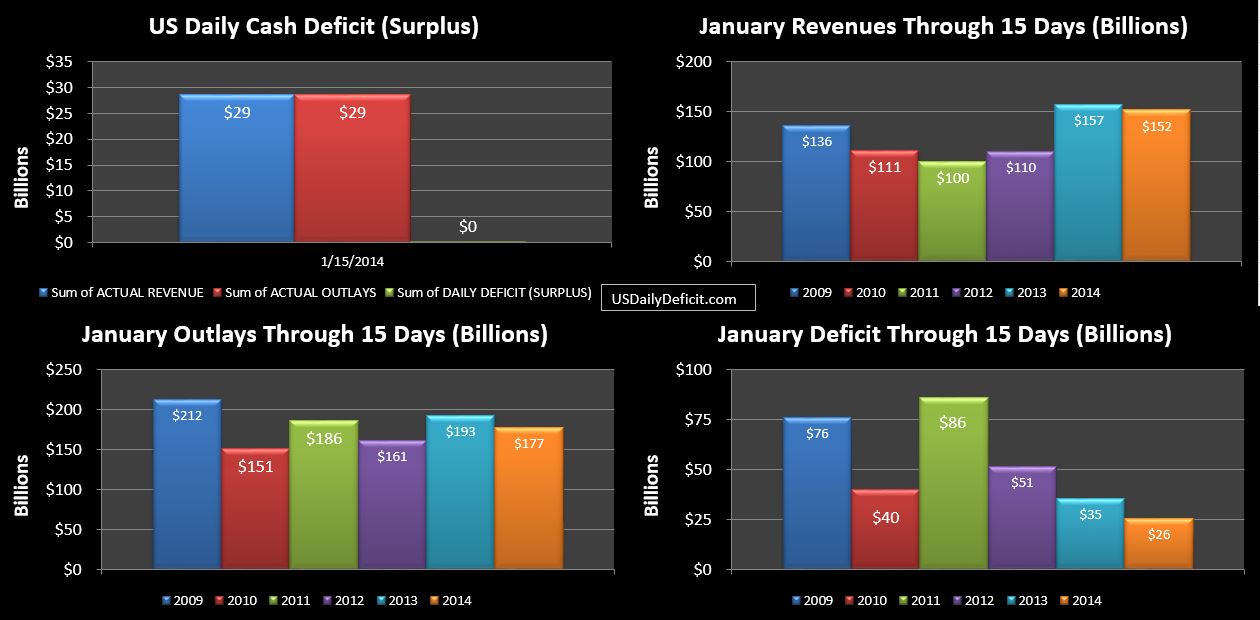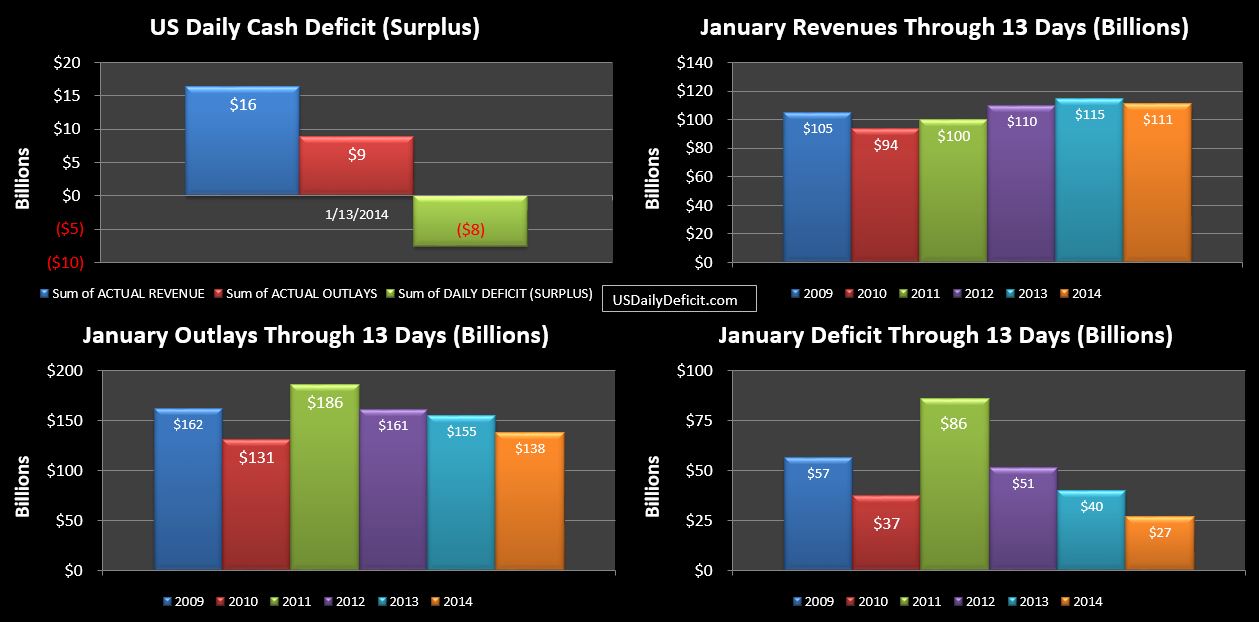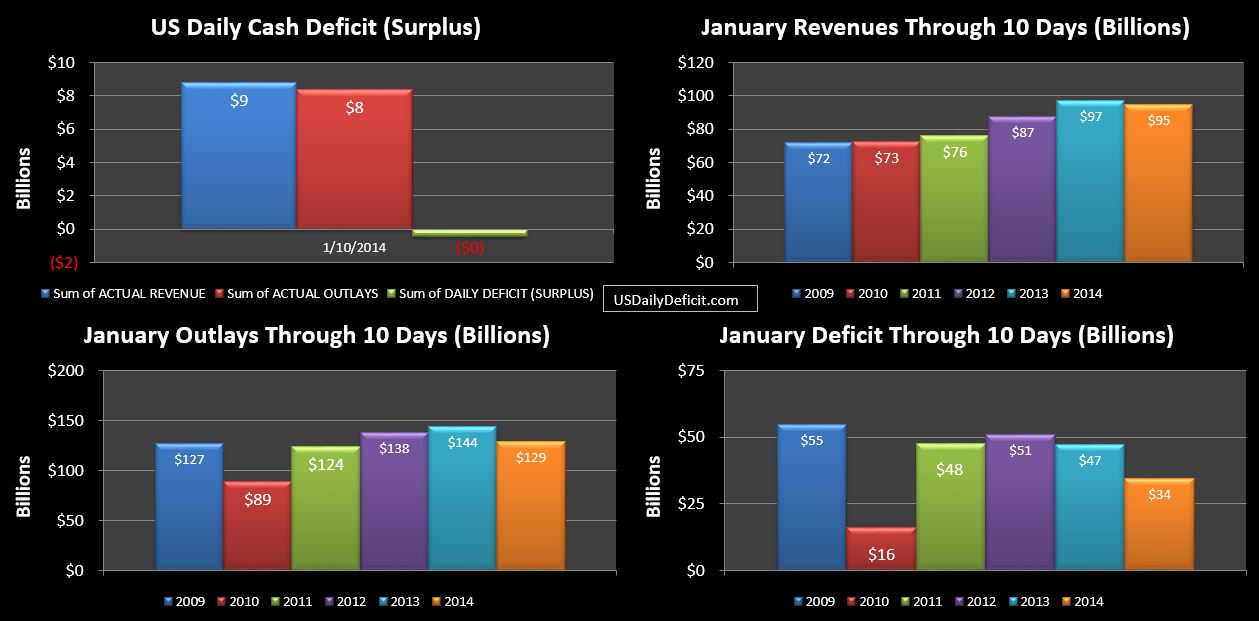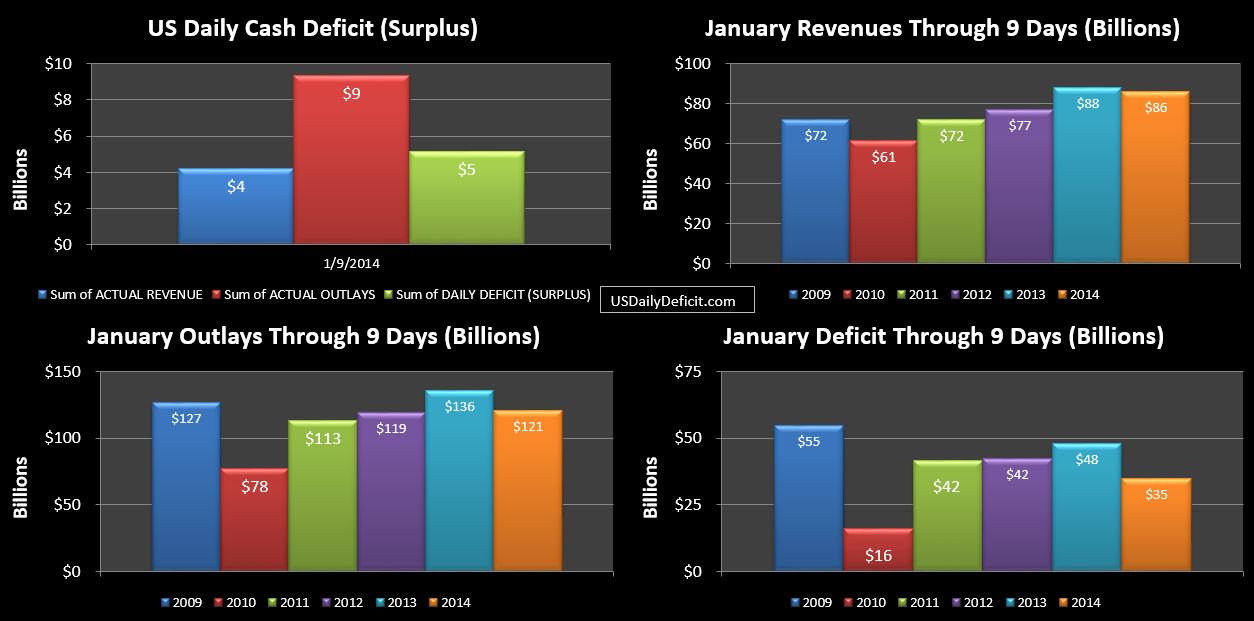MISH asks:
“When Will Interest on US National Debt Exceed $1 Trillion?”. It’s worth the read…and I suspect we are on the same page with this one…yes…we’re screwed. But…. while the charts he presents interest could hit $1T by as soon as 2018 in a worst case scenario. I find this quite infeasible…in fact, my model…and I’m not exactly an optimist, has the TTM interest passing the $1T mark in May of 2036….a full 18 years later.
There are a handful of differences in our assumptions that result in the large divergence.
1) I only count interest on external debt…the model they use includes internal debt. I have discussed this in detail before, but basically….paying pretend interest on the debt we pretend to owe to ourselves is an exercise in nonsense I’d rather not participate in. Hence…We currently have about $12.4T of external debt, on which we have paid about $218B of cash interest payments over the last 12 months. The rates on that range from almost nothing on the short term bills to 11.25% for the 30 year bonds issued in Feb-1985. So rough math…that gets us an average rate of about 1.8%.It’s not perfect, but it’s close enough. So…if $218B is our baseline….you can see that we have a long way to go to get to $1T.
2) The outstanding debt is all locked in at rates over terms from 1 month to 30 years. Thus, if interest rates doubled tomorrow, it would still take a very long time for that to show up in interest payments. The only debt immediately affected would be new issues, followed by the rolling of expiring debt. However…rates are currently historically low. Say the 30 year doubled from %3.75 to 7.5%… next year, when that 30 year at 11.25% needs to be rolled… the effect would still be to lower the average rate… blunting the impact somewhat. Finally…. Interest rates are unlikely to double overnight, or anytime soon, if ever. If they do…it means the Fed has lost control, and we will likely have bigger problems than when interest payments will hit $1T
3) The Federal reserve currently owns over $2T of the outstanding $12.4T of debt…and is adding $400-$500B per year under it’s QE3 program….so a substantial % of all new debt issued. (they don’t purchase direct, so they likely have a diverse portfolio…not only new issues). So, say the Fed owns $1B of those 11.25% 1985 bonds. In February, Treasury sends the fed their semi annual interest payment of $5.625M. However…all of the Fed’s “profits” are turned around and remitted back to Treasury….so the next day (actually Wednesday)…the fed sends the $5.625M, less maybe some overhead cost right back to treasury. In 2004, total Federal reserve earnings remitted to treasury totaled $18B…or $1.5B per month. In 2013, they were 4X higher at $76B…more than $6B per month. Now, while some of this is MBS and other QE3 holdings, the net effect is that a substantial and growing amount of the interest we pay is turned right back around and sent back to Treasury coffers…lowering the effective interest rate even more. Now…anyone with a brain can see this for the circle jerk that it is….unfortunately, brains seem to be in short supply.
And that gets us to what the article hints at and what I have been saying for about as long as I’ve been blogging….that low interest rate policy has absolutely nothing to do with “stimulating the economy” and everything to do with minimizing the governments interest expense. The Fed simply can’t let interest rates go up because it would ultimately blow up the deficit…just not nearly as soon as 2018. Same is true with QE….they can’t stop because there is nobody else to buy the debt…at least not at 1.8%, when anyone with a ruler and a piece of paper can clearly deduce that one way or another….all of this debt will ultimately be defaulted on….if not outright, then it will at least be inflated away. Still…for now, this is an extremely slow motion trainwreck. Cost pressures from Social Security, Medicare/Medicaid/Obamacare, and interest, while increasing…do so at a glacial pace compared to the financial world use to going at the speed of light. For now, these increases are being offset by healthy revenue gains and help from the Federal Reserve….who are desperately trying to delay the inevitable explosion.
To wrap it all up and answer the question “when will interest hit $1T?”… my best guess is actually never. I seriously doubt we make it long enough to run up a $1T per year tab. Not sure if that’s good or bad.



